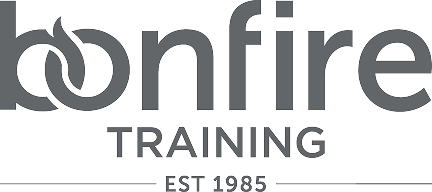As a trainer, you have a lot riding on your shoulders. Training new or existing employees can help your company improve employee performance, engagement, customer satisfaction, and so much more. But, your organization can only reap the benefits of training when it’s presented properly.
Here are some basic do’s and don’ts of training presentations:
Do:
1. Be Prepared
There’s no need to have your entire presentation memorized, but it’s important to rehearse it a few times so you aren’t stumbling over your words. It will help you shake off nerves, and your confidence will show on the day(s) of your presentation.
In addition to practicing what you’re going to say, be sure to also take note of:
- Voice volume
- Posture and movement
- Speech cadence
2. Know Your Audience
Before you start, take a little time to gain an understanding of what your trainees actually do for the company. They want (and need) to hear about topics that will help them do their job, not someone else’s. If you’re teaching phone skills, it’s important to package your message differently for front-line representatives versus C-suite staff.
It’s also helpful to know what kind of learners will be in the audience. If you’ve worked closely with any of them in the past, you may rely on your emotional intelligence to guide you. Or, you can simply ask them. Having this information will help you outline your presentation. The three basic types of learners include:
- Visual: learn by seeing
- Auditory: learn by hearing
- Kinesthetic: learn by doing
3. Include Engaging Activities
Include activities that will engage your various learners, keep their attention, and make your training stick. Your auditory learners will get the most out of your presentation, but for your kinesthetic learners, role-playing various situations can be extremely helpful. Also, watching videos of other people doing the activities can be beneficial for visual learners.
You should know that a person can be more than just one type of learner. Try to include an activity or various activities that will speak to all types. For example, Bonfire utilizes gallery walks to keep people engaged in multiple ways. We place flip chart pages about the topic of study on the wall of the training room. Then, we break down trainees into groups and have them go around to the various prompts, each adding or responding to the previous group’s answer. Discussing the answers afterward helps stimulate conversation and questions.
Don’t:
1. Be Bored with Your Own Presentation
Be passionate about your subject of training. People respond to other people’s excitement. If you walk into the room and speak in a monotone while frequently checking the time, you might as well not even give the presentation.
Think about how your training will help drive the goals of your organization and make your audience’s lives more efficient. Channel that thinking into your tone of voice and your physical presence. Present with purpose. You should neither wander aimlessly around the room, nor pace back and forth like a tiger in a zoo.
2. Rely Too Much on Your Media
Do not, I repeat, do not read your presentation word for word, and certainly don’t turn around and face your slide deck to read it. It’s unhelpful, counter-productive, and almost insulting. If all you’re doing is reading, then the training could have been sent in an email that people could read for themselves.
While it’s important to have a solid slide deck, remember: you’re the show. The media you use to support your presentation is the fog machine to your rockstar performance.
3. Talk Over the Head of the Audience
Data is good, but too much can be overwhelming. If you’re just firing statistics at your audience, they may mentally check out. Some real-world examples are needed to validate your training, but they should support your presentation rather than encompass it.
You’ll be better off using stats and situations that your trainees experience in their everyday work lives. Concrete examples will make an impression and stick with your audience.
One extra tip: training shouldn’t end after you conclude your presentation. Follow-up activities and correspondence enforce learning transfer, giving trainees an opportunity to apply their new skills and knowledge.
Are you ready to master the training techniques and philosophies that will keep your class and staff engaged? Our Presentation Skills course can help you incorporate the skills you need. Contact us today!
Additional Resources:
- Emotional Intelligence shows up every day. The question is how well is it managed to ensure everyone is performing at a high level.
- Improve your trainers presentation development and delivery skills to ensure excellence when presenting to clients.
- Develop employee engagement, emerging leaders, and improved customer experience. Contact us today!
